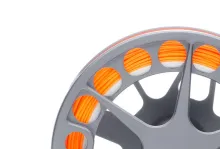The fly photo article series continues with a section on selecting a proper background for your fly photos. It might seem a trivial task, but trust us: it is not! The background can be everything from a uniformly colored surface to all kinds of materials in strange hues.
Selecting a background for your fly photos might seem a trivial task, but trust me: it is not!
The background can consist of everything from the same uniform colored surface to all kinds of materials in strange colors.
Next to this text you see a series of fly pictures - the same fly photographed on a selection of backgrounds in varying materials and colors. You can fiddle with them by clicking on one. That will take you to a page where you can experiment and compare the effects of changing the background color and material.
Identical pictures
As you can see the impression of the fly varies greatly with the background. I have tried to make the pictures as identical as possible, and all pictures are exposed manually at the same shutter speed and aperture as well as the light setting has been exactly the same in all pictures.
I have tried to vary color as well as texture and degree of reflection - some materials are dull and some are shiny. Some are also translucent or perforated. These have all been set up in front of a uniform blue background.
Careful with colors
Personally I like the textured bacgrounds, but as it will clearly show here, such a material has to be chosen with care. The basket weave and furnace neck might offer interesting backgrounds, but the fly doesn't really show well on either. The same goes for feathers or other materials, which are too close to the fly colors. Pink and blue necks to match the fly colors may seem harmonic and suitable on paper, but in real life they make parts of the fly invisible.
What's the best background?
Depending on your purpose of photographing a fly you do have some options. My favorite fly pictures are taken by the water and not in a studio, but if the target is to document the shape and color of a fly, a neutral grey, blue, green or white background is probably best. Light textures like wood or more erratic color blends can do too. And of course black. Most things look great on black, but it can be a difficult color to work with and it requires a lot of light.
A comment arrived from Danish Peter Lyngby - one of the forces behind the Danish site ScandicAngler.com:
You should try playing with colored filters in your backgrounds - it can yield some really nice transitions, which at the same time will complement the colors of the fly. The colors can shift in nice tonal ranges as the light of the lamp fades at the edges. The attached pictures have been taken with this principle - 3-4 spots and just a white wall as a background.
In my defence I need to say that these pictures were shot several years ago, when the digital cameras had just started coming, and I was handling an expensive golden nugget worth close to a couple of thousand dollars, just barely able to handle 2 megapixels! It's a crazy world....
- Log in to post comments







